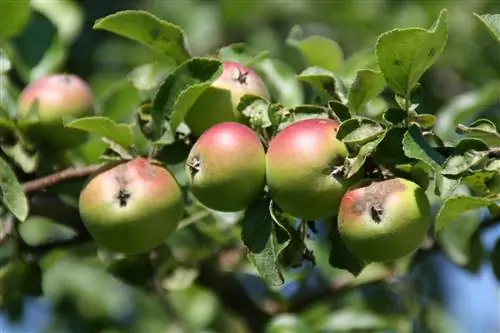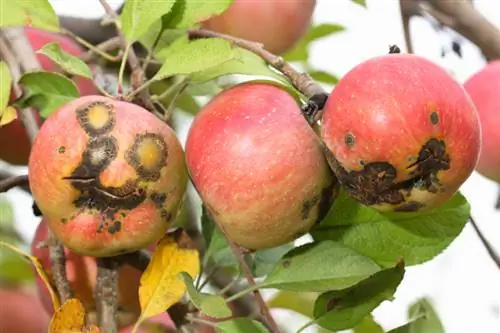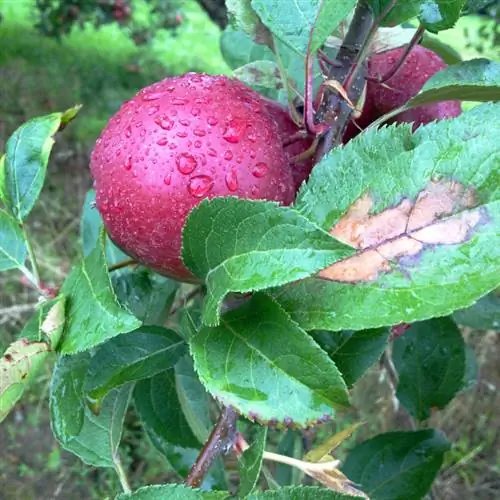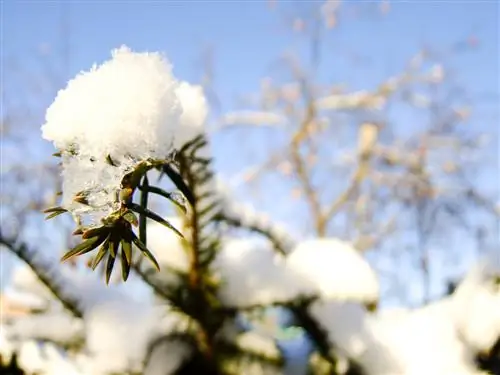- Author admin [email protected].
- Public 2023-12-16 16:46.
- Last modified 2025-01-23 11:22.
If small, unripe fruits suddenly appear under the apple tree in June, some garden owners fear that the fruit tree will become ill. However, the June fall usually has a natural cause that does not endanger the vitality of the tree in the long term.
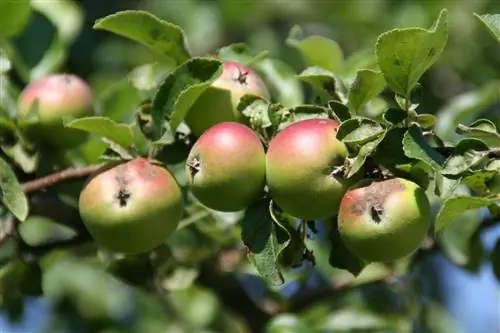
Why does the apple tree drop its fruit in June?
This phenomenon is aprotection mechanism of the apple tree (Malus domestica). Often the tree has simply produced too many fruits or has been fertilized insufficiently or too late. Occasionally June falls also occur after late frosts.
What triggers the June fall?
Responsiblefor the June fallis the metabolism of the apple tree. A fertilized apple produces plant hormones and growth regulators that send signals to the tree, so that it supplies the fruits with sufficient nutrients, sugar and water.
Poorly pollinated flowers or fruits that were flown too late produce fewer hormones. That's why the tree only receives weak feedback from these apples. It forms a layer of cork at the base of the stem, which separates this apple from the supply. This causes the fruit to fall off in June.
Does fertilization help against June fall?
Especially in older apple trees that have been in the same location for several years,canthe June fallcan be triggered by a lack of nutrients. Also in In midsummer, a poorly cared for tree will still shed fruit.
- To determine which nutrients are missing, a soil test is recommended.
- Then provide the apple tree with a suitable fertilizer in April.
- If the substrate is very depleted, a second fertilizer application should be made in May or June.
Can drought be a cause of the June fall?
As a rule, the soil is still moist enough in June anddroughtnessisonly a problem in exceptional cases. Things look a little different However, when numerous large and he althy apples fall in July and August. During summer droughts, the stems of the fruit become porous and can no longer support the weight. Regular, thorough watering of the fruit tree helps here so that the tree also has enough water in the deeper layers of the soil.
How do I know whether pest infestation is causing fruit drop?
Since the fruits showclear traces,pest infestationis quite easy toidentify. For The June fall is usually caused by the codling moth, which causes the following damage:
- Maggots are crawling in the young apples, on the buds and in the bark.
- There are drill holes outlined in red in almost all fallen fruits.
- The larvae's feces appear as a crumbly mass.
- If you cut open the unripe apple, the flesh will be discolored.
What can I do about the June case?
June fruit fall cannot usually be completely prevented. However, there are some steps you can take to reduce the number of falling apples:
- If the tree produces a lot of flowers in one year, thin them out.
- Break off the smallest fruits by hand in May.
- Make sure the soil is of good quality and fertilize regularly.
- Prune apple trees professionally.
Tip
A certain amount of falling apples is normal
During fruit development, an apple tree rejects up to ten percent of he althy fruits. We only speak of June fall when more than thirty percent of the apples are unripe under the tree in June. In order not to lose the entire harvest, it is important to quickly find out the cause and eliminate it.

